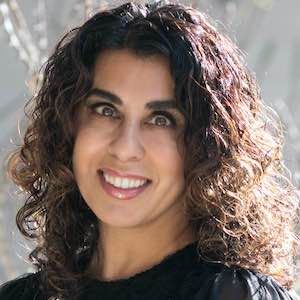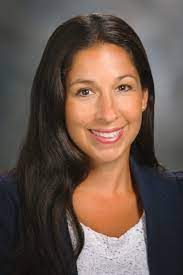Article
Go Red for Women Day: Confronting Glass Ceilings in Medicine
Author(s):
In recognition of Go Red for Women Day on February 3, this feature shines a spotlight on the hurdles faced by women in cardiology and offers perspective on the battle for gender-based equity in medicine from the perspective of a pair of female leaders.

An American Heart Association-led initiative, Go Red for Women was born out of the need to raise awareness of dangers and prevalence of cardiovascular disease in women the among the general public. Celebrated annually on the first Friday in February since 2004, recognition of the day and the cause has grown each year.1 Although wearing red and showing solidarity helps to achieve the goal of raising awareness, it falls short of achieving equity for women in both clinical care and the workforce.
Recent decades have ushered in major change in medicine, with the field of cardiology making significant strides towards true diversity, equity, and inclusion. In cardiology, more women are in the field than ever before, but still make up less than 20% of the field.2 An example of this issue is the representation of female physicians in trial leadership roles.
In a study presented at the American College of Cardiology (ACC) 2022 annual meeting, a UC Berkley-led team detailed the current disparities in trial leadership. According to the study, which included more than 600 cardiovascular clinical trials published from 2010-2019, just 18.4% were led by female principal investigators, with women leading just 18.9% of new drug research trial and 9.6% of device trials.3
Results of the study also spoke to the belief diverse healthcare workforces provide a greater quality of care, with data from the study suggesting female primary investigators led trials with 7% women than their male counterparts.3
"We're starting to see work being done to close the gap in representation, but more needs to be done," Walsh said.3 "Scientific sessions and meeting planners only have so much influence over who is presenting at conferences. This comes down to senior clinical trialists relinquishing the podium and giving a leg up to others. There will be no room at the top for new and innovative investigators to shine if those who have already achieved success don't make room."
Women in the field are not only underrepresented, but they are under-compensated. In a 2018 study in the Journal of the American Medical Association, investigators reported women received salaries that were 7.3% less than their male counterparts during a 35-year period, which translated to a difference of $2.5 million during a 35-year career.4
The issue of harassment and discrimination, regardless of gender remains a prominent issue in medicine, with the field of cardiology no exception. A study published in December 2022 in the Journal of the American College of Cardiology, found roughly 50% of cardiologists globally had experienced sexual or emotional harassment.5 Despite all the progress made in recent years, conscious and unconscious bias also remains a prominent issue. A byproduct of this has been the need for current women leaders in medicine to develop the ability to confront this type of bias.
Marth Gulati, MD, MS

“It isn't enough to just know you have bias, we all have bias. So, I can pretty much tell everyone, ‘You all have bias or I have bias’. But how do I counter it? How do I make myself more a better person so that I can help everyone make everyone not feel like they, I want them to feel like they belong in this community,” said Martha Gulati, MD, president of the American Society of Preventive Cardiology and Anita Dann Friedman Endowed Chair in Women’s Cardiovascular Medicine and Research at Cedars-Sinai, in an interview with HCPLive.
With these disparities placing undue burden on women in the field, many female leaders have taken it upon themselves to be the change they seek to see within medicine. Among the highest priorities for the current female leaders in medicine is to create and foster a community of support for one another and early career clinicians and researchers.
Mara Antonoff, MD

“I think having mentorship support systems and trying to find other people who can help navigate that pathway is going to be really important, but being the change cannot rely solely on the people who are trying to break through. It relies on people who have broken through turning around and helping bring other people up as well,” explained Mara Antonoff, MD, an associate professor of thoracic and cardiovascular surgery at UT MD Anderson Cancer Center, in an interview with HCPLive. “That's a huge, huge, important thing. Once you climb that ladder, you got to reach down and pull the next person up. So, for those of us women who have made it, we need to bring more women up and, likewise for any other underrepresented group, continuing to help mentor and be a support system to bring other people forward.”
Among the most remarkable advances in the history of technology was the advent of the internet. The ability to share information ushered in a new age of advancement for humanity, which is arguably most reflected within the field of medicine. For the first 2 decades of its existence, this pertained primarily to the sharing of study data and information in the more conventional sense. Since then, the social media boom that has occurred since the turn of the century has reshaped the ideas of communities in medicine.
During her interview with HCPLive, Gulati remarked on the ability of social media to harbor conversation among colleagues and increase accessibility to leaders and mentors, which was unrealistic for many in medicine just a few decades ago.
Although capable of creating significant change in their own right, both Gulati and Antonoff made a point to underline the ability to effect change on medicine cannot be placed solely on individuals and requires buy-in on institutional and organizational levels. In her interview, Gulati called attention to the strides towards equity for women in cardiology in the last 20 years and praised leading national cardiology organizations for their participation, which she pointed out was crucial to effect change across cardiology.
When examining the achievements of female cardiologists in paving the way for their future colleagues and leaders in medicine, the effect of this desire for change becomes evident. In the past 33 years, the field has witnessed Bernadine Healy, MD, became the first female woman to direct the National Institutes of Health 1991, Nancy Dickey, MD, was inaugurated as the first female president of the American Medical Association in 1998, and the ACC formed their Women in Cardiology Section in 2004.6 Furthering their push towards equity as a specialty, the ACC launched a Task Force on Diversity and Inclusion in 2017. In the announcement of Task Force’s creation, the ACC noted the Society of Thoracic Surgeons creation of a special Ad Hoc Task Force on Diversity and Inclusion in the fall of 2017.7
In her interview, Antonoff noted the need for continued patience in striving to achieve the goal of equity in medicine for women.
“You can't just decide one day, ‘Okay, we want half of cardiothoracic surgeons to be women’ and the next day they are. It's a long process. That is why any delays and making changes have impact for decades to come because it's a decades-long training process. So, the sooner we implement change, the better but it is going to be gradual—year by year, decade by decade. Hopefully, we can do a better job of representing our patients and, in the interim until we fully represent our patients, it is so critical that we are aware of the disparities in care that the patients receive,” Antonoff said.
Although a decades-long timeline can be a cause of frustration for many, Gulati made a point to call attention to a recent example of the progress that has been made during her own career as a cardiologist through the lens of a visit to her alma mater.
“I looked up all the residents just because I have to do morning report with them. I was like, ‘Okay, I need to know where all these people are from’. So, I was scanning where everybody went, but also they had pictures of everyone. And I was like, ‘Wow! This is so more diverse than when I was there. How awesome’. I was so proud of the University of Chicago for the change that I can see and I shared it with one of my former classmates from that time.”
References
- About Us. www.goredforwomen.org. https://www.goredforwomen.org/en/about-go-red-for-women. Accessed February 3, 2023.
- Women in cardiology. American College of Cardiology. https://www.acc.org/Membership/Sections-and-Councils/Medical-Residents/Women-in-Cardiology. Accessed February 3, 2023.
- ACC.22 press release
- Shah RU. The $2.5 Million Wage Gap in Cardiology. JAMA Cardiol. 2018;3(8):674–676. doi:10.1001/jamacardio.2018.0951
- Feature: Women still missing from clinical trial leadership. American College of Cardiology. https://www.acc.org/latest-in-cardiology/articles/2022/03/12/01/42/feature-women-still-missing-from-clinical-trial-leadership-acc-2022. Published March 28, 2022. Accessed February 3, 2023.
- A timeline of achievements for women cardiologists. American College of Cardiology. https://www.acc.org/latest-in-cardiology/articles/2016/05/20/07/50/a-timeline-of-achievements-for-women-cardiologists. Published May 23, 2016. Accessed February 3, 2023.
- American College of Cardiology Diversity and Inclusion Initiative. American College of Cardiology. https://www.acc.org/~/media/Non-Clinical/Files-PDFs-Excel-MS-Word-etc/About%20ACC/Diversity/2018/03/Diversity-Inclusion-Strategy-Summary.pdf. Accessed February 3, 2023.





